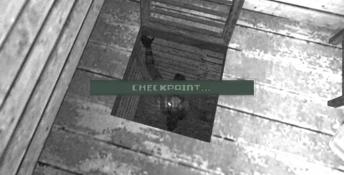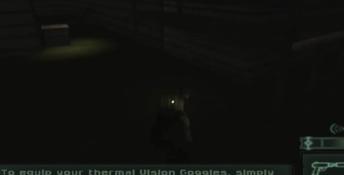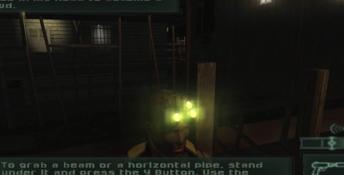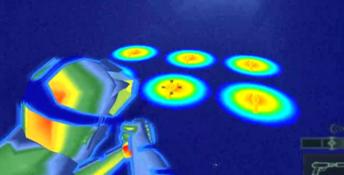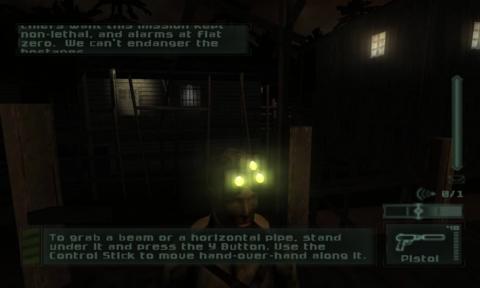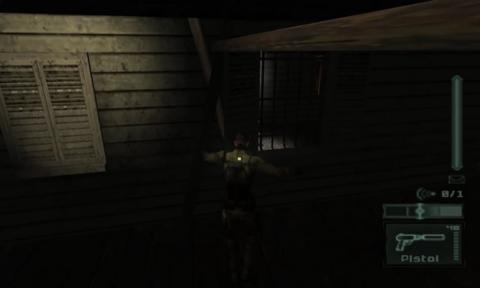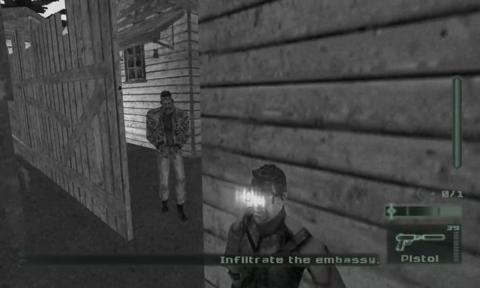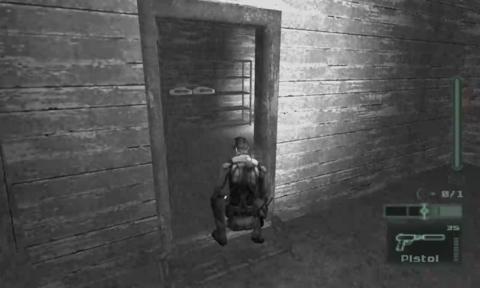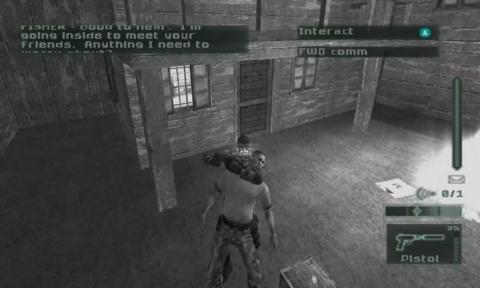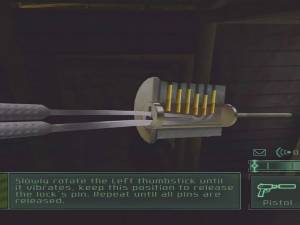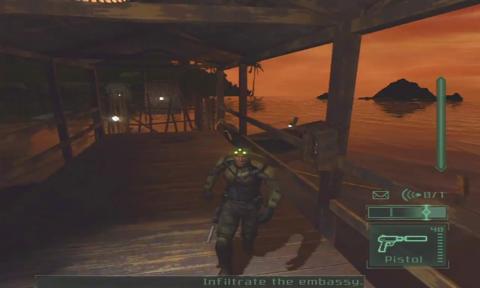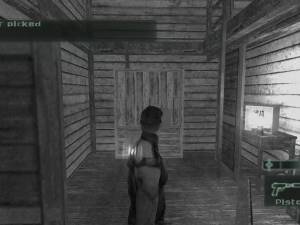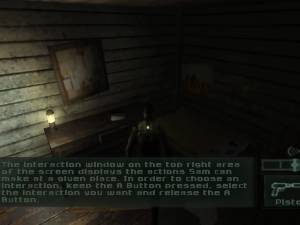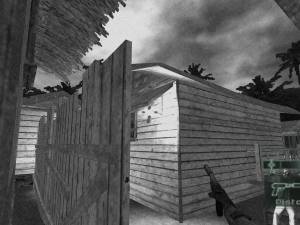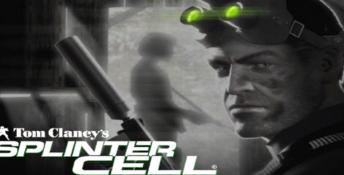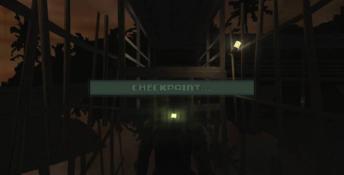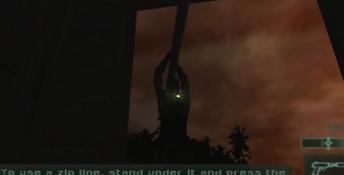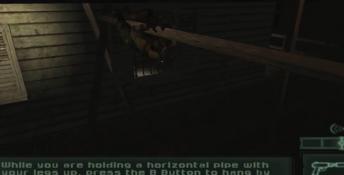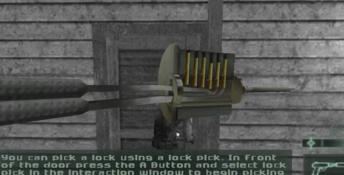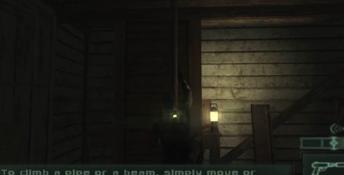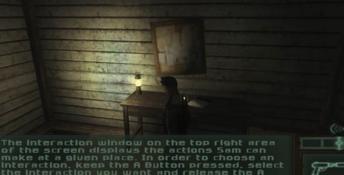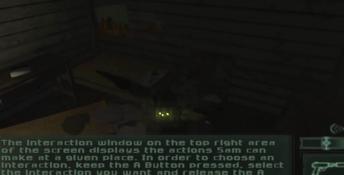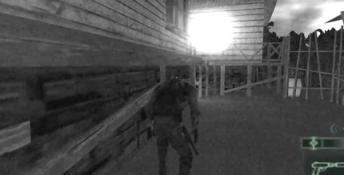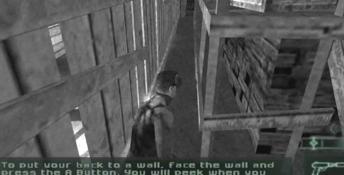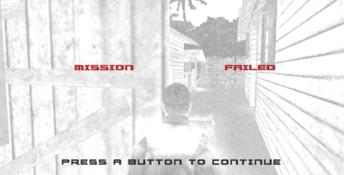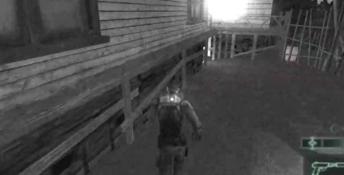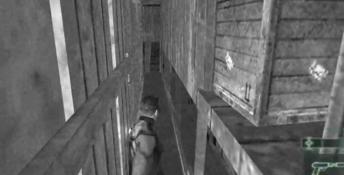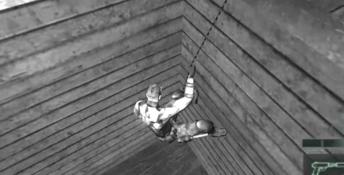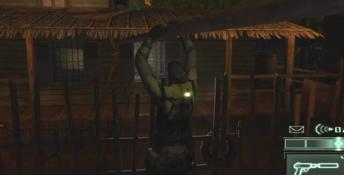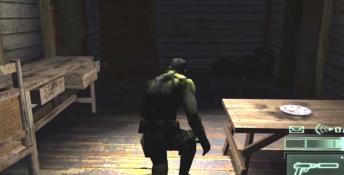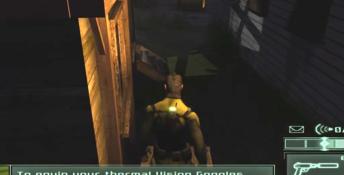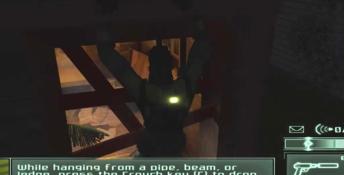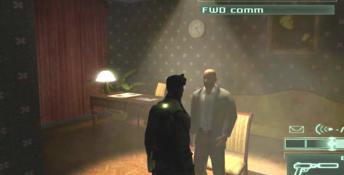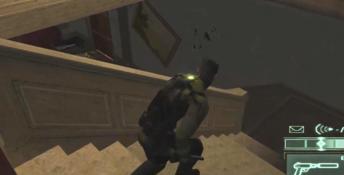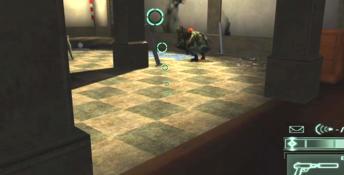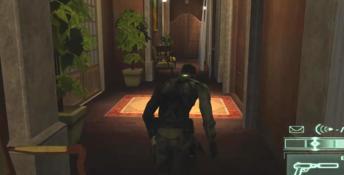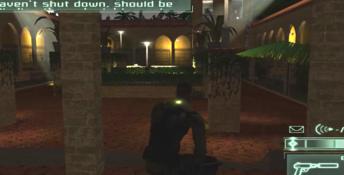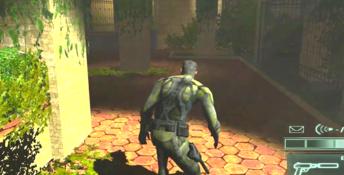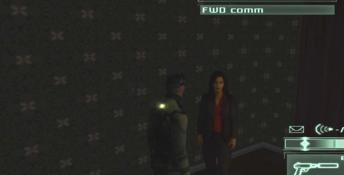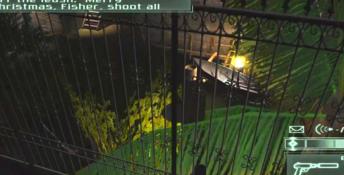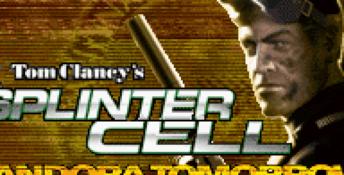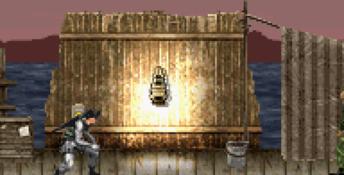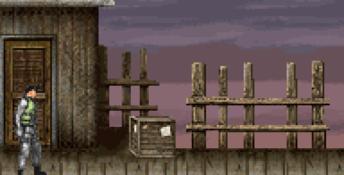Tom Clancy's Splinter Cell: Pandora Tomorrow
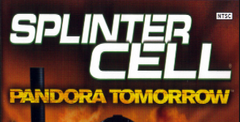
| a game by | Ubisoft |
| Genre: | Action |
| Platforms: | XBox (2004), GameCube, PC (2004), Playstation 2 (2004), GBA (2004) |
| Editor Rating: | 8.8/10, based on 8 reviews, 13 reviews are shown |
| User Rating: | 9.0/10 - 8 votes |
| Rate this game: | |
| See also: | Top GBA Games, Tom Clancy’s Games, Splinter Cell Games |
The first ever shots of the brand new Splinter Cell game, revealed just last month, have dropped through a skylight and landed silently on our desks, still smelling slightly of ozone and camo paint. Dubbed Pandora Tomorrow, the new game is set to offer improved graphics, new gadgets and new moves in a full new single-player campaign for elite sneaker Sam Fisher.
However, what's truly got us reeling is the bombshell announcement of online multiplayer gameplay - something never before attempted by a stealth-action franchise. We snuck up on producer Domitile Doat and demanded details.
"Every fan of the original game knows that there is only one Sam Fisher. And he works alone. So you won't be playing Sam online. Instead the storyline for the new game features the NSA experimenting with a new type of infiltration operation that requires small 'shadow net' units. These are the people that the NSA calls upon when one man is just not enough." What Domitile is trying to say that this is no mere thrown-together deathmatch - we're talking full team-based co-op here. She also stressed that the multiplayer side of the game is still very much in progress, the team experimenting with various ideas to see what works best.
"Translating Splinter Cell into a high-quality multiplayer game is obviously a huge challenge because the storyline and gameplay will need to be adjusted, yet we want to remain true to the original game. Therefore, the core elements of the single-player game will remain in the multiplayer modes. The light and shadows will still figure prominently into the gameplay, and players can rely on their trusty split jumps and other moves, and will have a number of high-tech gadgets at their disposal. How exactly we will alter the mechanics of the game is not yet final."
Clearly, there's amazing potential here, and would dearly love to see a proper, stealthy multiplayer game where concealment, sound-detection, and laying traps take precedence over mindless fragging.
Ubi Soft also gave us some exciting hints of what we can expect from the single-player campaign. "The game will take us to new locations around the world," grinned Domitile. "There will be more maps that are open, as well as more daytime maps that feature civilians going about their daily lives. This will be pretty challenging, as Sam must carry out his objectives without alerting the civilians to his presence." Domitile also promised that any other enhancements made to the game, whether to the graphics or the feature set, will be a lot more than mere window-dressing. "Only the implementations that create a real benefit to the gameplay will be considered," she insisted. "Improved physics would add to the high levels of realism and believability, so it's probably safe to say that improved physics will be evident in the final product."
Of course, one thing we can say with confidence is that, as the follow-up to one of the finest third-person games of all time, in development by the same hit-making development team, Pandora Tomorrow is going to be brilliant.
Download Tom Clancy's Splinter Cell: Pandora Tomorrow

System requirements:
- PC compatible
- Operating systems: Windows 10/Windows 8/Windows 7/2000/Vista/WinXP

System requirements:
- PC compatible
- Operating systems: Windows 10/Windows 8/Windows 7/2000/Vista/WinXP

System requirements:
- PC compatible
- Operating systems: Windows 10/Windows 8/Windows 7/2000/Vista/WinXP

System requirements:
- PC compatible
- Operating systems: Windows 10/Windows 8/Windows 7/2000/Vista/WinXP

System requirements:
- PC compatible
- Operating systems: Windows 10/Windows 8/Windows 7/2000/Vista/WinXP
Game Reviews
When Sam Fisher slunk out of the shadows 12 months ago, he was greeted with open arms and the whirring of thousands of PC disc trays. With his arsenal of weaponry and gadgets, gravelly voice and no-nonsense attitude, Sam was someone who clearly got the job done and didn't need a daft, double-entendre name to do it.
A year later and our intrepid hero Sam is back in the fray once more in Splinter Cell: Pandora Tomorrow, the long-awaited followup that polishes many areas of the original, as well as adding a brand new online element. This time around, it's the year 2006 and Sam's mission is to track the activities of the notorious terrorist leader Sadono. It's a job that will take him from the enclosed, darkened streets of Jerusalem, and see him journeying through France and even into the depths of the jungle. No stone is left unturned.
Pandora'Tomorrow is far more substantial than a mere expansion pack (the developers reckon that the eight single-player missions should take the same amount of time to complete as the original game), yet not quite different enough to be called a true sequel.
The Second Coming
Instead, Pandora Tomorrow is pretty, much Splinter Cell: Part 2 (All The Bits We Wanted To Put In The First One). Developer Ubisdft has made a tremendous effort to pay attention to the criticisms aimed at the first game - such as the difficulty levels and in particular, the linearity of the gameplay - and wants to ensure they're sorted in PT.
"Making the game less linear has been a lot of workjor us, because we've had to develop all the different possible pathways that a player might take during the game just getting from A to B," explains Pandora's producer, Arnaud Carrette. "So in Pandora Tomorrow, we've tried to give players the opportunity to be able to go wherever they want within the game environment. But we've used a few features like the dynamic lighting systerti to try and subtly emphasise interesting routes that the player might like to explore." Along with the linearity of the gameplay, another criticism that was levelled at Splinter Cell was the difficulty levels and the problems inherent in the basic 'three alarms triggered and you're out' rule. "We wanted to make the game less difficult for the players, but still make sure it retained a strong elemenf of strategy," explains Arnaud. "So we decided to make the triggers have a direct impact on the Al of Sam's enemies." This means that each time Sam is spotted, his foes will reach new levels of heightened awareness and become more dangerous, as well as harder to kill. NPCs will visibly become sneakier if you gain their attention - they'll put on extra armour, as well as becoming more aggressive and cunning, to the extent of even changing their patrol paths.
Basically, this means that the game becomes tougher the more blase you are about keeping out of sight, which will force you into making the most of Sam's stealthy skills and gadgets. And let's face it, that's where the'real fun lies anyway.
Having played many oithe new missions, we can tell you right now that you'll need a patient approach to stealth and stalking to succeed, as the NPCs become hugely tough on their highest level of awareness. You'll get peppered with bullets from all comers if you start making a racket - but at least you know you've only got yourself to blame.
Just The Two Of Us
It always warms the heart when a developer appears to have listened to fans and critics and improved on its previous efforts. It proves that this gamedesigning lark can be a two-way street, and Splinter Cell: Pandora Tomorrow shows exactly why this is so important.
While it may not deviate much from jts predecessor; there are lot of little changes in PT that are going to make a huge impact. Alongside great additions like the multiplayer mode, Pandora Tomorrow is set to win.over any dissenters of the original and keep the game's many fans blissfully happy. Including us.
Light And Shadows
Sam Gets Out In The Sunshine
Due to popular demand, Pandora Tomorrow does contain a lot more outdoor environments than the original, enabling Sam to get out, stretch his legs a bit and test his new green-hued stealth suit. The jungle environment in particular is a lot of fun, as you can lurk and hide bodies among the greenery (and Sadono's crop of er, recreational herbs). You can also use your thermal sensors here to search for hidden booby traps that might be lurking in the foliage.
The sun also adds a superb new twist to the outdoor missions and demonstrates how the developer has continued to use light and darkness as a predominant aid to stealth and detection. When you're outdoors, the sun will realistically move through the sky throughout the mission. This has the effect of both hindering and helping you, as the moving sunlight will cause shadows to lengthen, create and destroy pools of darkness and occasionally (if you're lucky) blind your enemies.
furtive action this month, with two demos from Pandora Tomorrow, Ubisoft's ace stealth sequel. The first demo comprises a short yet tense single-player mission set on a speeding train, while the second gives you a taste of the game's innovative Spies vs Mercs' multiplayer. First up, the single-player demo. Requiring equal parts patience and timing, the mission sees you working your way through - as well as over and under -the Paris-to-Nice night train. Your job is to find Norman Soth, a shady terrorist and possible double agent, and tap his phone conversation with a laser mic. It's one of the more straightforward missions in the game, and provided you remember your stealth basics, you'll be fine.
The multiplayer demo is a different story. The game mode is basic in concept - hide and seek with guns - but there are countless intricacies to discover and even stealth veterans may be a bit bewildered at first. The demo contains just one map, Mount Hospital, and one mode, Neutralization, which tasks the Spy team with finding and hacking a number of terrorist devices. It works a bit like a bomb-defusing mission in Counter-Strike, but with a maximum of four players and two very different playing styles.
Remember: you'll need a mouse with a wheel to get the most out of Pandora Tomorrow. The wheel is used for context menus and movement speed, so if you haven't got one, upgrade now!
Oirty SNEAKS everywhere, it's time to prepare yourself - the follow-up to the greatest stealth shooter ever is almost upon us. What was initially tipped as an expansion pack has now blossomed into something more substantial, and Pandora Tomorrow now promises both a robust single-player campaign and the exciting prospect of online multiplayer.
New moves for Sam Fisher include the ability to pause in the middle of shimmying along a beam, hang by your legs and take pot-shots at enemies, as well as a Streetfighter 2-style somersault kick.
However, still the biggest mystery surrounding the sequel is how the new multiplayer modes are going to work. We've seen some snippets of them in action, but only enough to glean that you work in squads, and have the full range of stealth options available to you. It's not yet clear if there's to be a full-blown stealth deathmatch mode, or if you're simply able to play through the solo campaign in co-op - though the screenshots are certainly suggesting the former.
All will come clear in the coming weeks, as Ubisoft is planning to strip away the cloak of mystery very soon.
Tell You what, it's a damn good thing computer screens have that nice bright glow about them, as I'm currently writing this review in complete pitch darkness. Not because I think I'm Sam Fisher and have to stay in the shadows all the time - that would just be ridiculous. No, it's just that I shot out all the light bulbs in my house the other day - just to save on electricity, mind. And I only used the silenced pistol so as not to upset the neighbours. They were already a bit put out after I made their dog stop barking, though I used the silencer then as well, so I don't know what they're bloody complaining about. Maybe they're terrorists? Perhaps I'll pay them a visit later and see if lean... 'neutralise' the situation.
I Digress...
But where were we? By sheer coincidence, and not at all connected to my recent behaviour, the subject of today's review is third-person sneak 'em up, Splinter Cell: Pandora Tomorrow. Coming little more than a year after the original took the stealth-action genre to new heights, the follow-up promises eight huge new missions and an exciting new multiplayer game mode. But what is it? An expansion pack? A sequel? A pseudosequel expansion pack? Well, it's all of these things, and yet none. Confusing I know, but that's the nature of things when you're working for a top-secret branch of the CIA. Which of course I'm not. Let's have a look at the game then.
From the first moments, it's good to be back. As soon as the curtain rises on the magnificently sun-drenched insertion point, Pandora Tomorrow reminds us why we loved its precursor so much. The faultless presentation, the immaculate looks, the beyond-Bond spy kit - everything is as we left it in the world of Third Echelon - and that means great.
A few new features quickly become apparent. The HUD has been streamlined, such that the lock-pick and optic cable are now built-in, context-sensitive items that never appear in your inventory. Enemy alert modes, once vague and amorphous things, have been neatly clarified - trip one alarm and all tangos don flak jackets; slip up twice and they add a helmet.
Dumping unconscious bodies has also been made more transparent, your light meter now flashing helpfully to indicate a safe drop-point. And even Sam Fisher, 'the most reluctantly ageing badass in the world', has become a little more nimble. On top of his regular wall-peeks and split-jumps, the grizzled gunman can now do half-split-jumps, hang by his legs to shoot, and perform the so-called SWAT turn - a kind of stealthy switcheroo that allows you to pirouette past open doorways with complete discretion. As you'd expect, they're all completely farfetched and extremely cool.
The sophisticated stealth system also impresses just as much as ever. The game opens in Indonesia, where the US embassy has been raided by militant insurgents, kicking off a typically close-to-the-knuckle Tom Clancy plotline about anti-US terrorism and bioengineered virus agents. It's a politically sensitive scenario, so there's a 'no lethal force' order in place for much of the mission (and indeed, the entire solo campaign).
Straight off, I decide to be really clever and beat the no-kill edict with a bit of foul play. Sneaking up and pistolwhipping the terrorist guarding the embassy gates, I proceed to dump his inert form in a stream, thinking there's no way in hell the game is monitoring his oxygen levels. More fool me. Two minutes later, I fail the mission for drowning a man. It may be a small thing, but to me, that's impressive. It's smart, it's coherent with the gameworld, and it's the sort of thing that makes Splinter Cell the best stealth series out there.
All Too Easy
Saying this, Pandora Tomorrow is not without its problems. The single-player missions have a definite expansion pack feel to them, because, er, that's exactly what they are. There are some superb moments, which occasionally surpass what the original game managed -including a cool over-and-under escapade on a train and an excellent Die Hard-esque airport mission - and yet the same old criticisms of Splinter Cell still apply. The game is still relentlessly linear, the occasional (painfully obvious) choice of pathways somehow only highlighting the lack of genuine decision-making. Again, the developer has singularly failed to capitalise on some of the best moves and gadgets in the game. Things like the split-jump, heat-vision, human-shield and remote spycams are criminally underused.
But perhaps the most significant letdown is the Al. While it hasn't actually got any less advanced since the previous game, it does give that impression, having been watered down in response to criticism that the original game was too difficult. But instead of taking the tricky route of rethinking level design or adding new gadgets, the developer has simply made the enemies deafer, blinder and more stupid. NPCs will walk within a foot of your position and not see you, they'll happily ignore the deaths of nearby comrades, they won't bat an eye if you shoot out every light in the room and leave them in pitch blackness, and they'll certainly never leave the room to pursue you. Not only does this rip holes in the thin gauze of immersion covering our eyes, but it makes the whole thing a bit on the easy side. Veterans should probably head straight for the Hard mode, and this is never a good sign for game balance.
Back In Black
Despite all this, Pandora Tomorrow is still Splinter Cell, and as such is great fun. The missions are well designed and full of inventive stealth set-ups, and for me, more of the same is just dandy. But things really haven't progressed very much since the original.
However, before we declare Pandora Tomorrow an expansion pack masquerading sequel, let's not forget the really exciting part: the superb, innovative multiplayer game. You see, Pandora Tomorrow is actually two games in one. The single-player campaign was developed in France as a straightforward expansion for the original Splinter Cell - that's the 'Pandora Tomorrow' bit. Meanwhile, in Shanghai, an entirely different team was working on a new multiplayer concept, dubbed 'Shadownct Vs Mercenaries'.
The basic idea is this. Two teams face off in a brilliant computerised version of hide-and-seek. One team plays in first-person mode and has all the firepower on its side - that's the meres. The other team plays in classic stealthy third-person, and has agility, sneakiness and deception on its side - the so-called shadownets. From this brilliant concept, everything else follows naturally.
There are a few different game modes, but basically the meres have to protect a number of items from being nicked, hacked or otherwise tampered with by the shadownets. To help them in this aim, the levels are littered with motion detectors and hacking monitors linked to the mercenary comm channel, and they can add to this array by laying spy-traps, trip lasers and proximity mines - all there to cause headaches for the shadownets.
The shadownets are basically wannabe Sam Fishers -junior spies who haven't quite taken the stabilisers off yet. They can perform many of the same moves, such as wallpeeks, split-jumps and whizzing down ziplines, but they're not as invisible or as powerful as Sam himself. Plus, they're only armed with stun guns, flashbangs, diversion cams and the like, so their best bet is to stay out of sight and only pounce when surprise is most definitely on their side. The result is a superbly balanced game of cat-and-mouse with more tension than Jordan's bra-strap.
Four On The Floor
There is however, one caveat. Due to limitations imposed by the Xbox version, there's a maximum of four players in the game. Two-on-two is the default, but you can do handicap matches or even nail-biting one-on-one duels as well. It's an unusual limitation for a PC game, which in recent times have been moving towards more players and bigger environments, but it works surprisingly well.
Apart from the refreshing change of pace, it's a more intimate style of game where every player is a crucial part of the proceedings. The eight levels are well designed and cleverly honeycombed with tunnels and access shafts that only the shadownets can move through. And with teams of just two, co-operation is inescapable. (This, combined with the fact that it's eerily suited to office LANs, has made tor many lost man-hours at PC in the past two weeks.)
As you can see, we're rather impressed with Pandora's new multiplayer game - in fact, we've been quietly lobbying for someone to do something like this for years. Our only real criticism is that, because the two halves of the game have been developed at opposite ends of the Earth, the default control systems for the two are noticeably different. This is hugely annoying when you come to switching between the two games, but hardly the end of the world.
Quibbles aside, the multiplayer game is by far the more impressive aspect of the Pandora Tomorrow package. It's different from any other multiplayer game out there, and it's thoroughly and addictively playable. Indeed, the spies vs meres game mode has already done wonders for the multiplayer scene in the office, and if the PC fraternity can only see past the game's console leanings, it has the potential to do the same online.
Ultimately, the multiplayer game has saved Pandora Tomorrow from being simply an above-average expansion pack. The solo missions are undeniably solid, but bundled with one of the coolest and most distinctive multiplayer concepts in years, Pandora Tomorrow is essential gaming.
Spy Talk
Whisper Sweet Nothings In Pt Multiplayer
Another influence of the Xbox version on Pandora Tomorrow's multiplayer game is a huge emphasis on voice communication. With a headset in place you can liaise constantly with your partner, co-ordinating attacks and setting up diversions, ambushes and hit and-run attacks. As a spy, you can hack into the mercenary voice channel by tagging them with a spy bullet, and you can even whisper threateningly in their ears when you've got them in a headlock. Superb.
People say:
A game company once asked me why I only scored their game a 9 out of 10. Them: You liked our game, didnt you? Me: Yup. Them: Was anything wrong with it? Me: Nope. Them: So why didnt it score a 10? Me: Cause it didnt wow me. Pandora Tomorrow is that wow game and thus deserving of a 10 and Im not just talking about a damn, these graphics look fine kind of wow (and damn, they do look fine). From the opening cinema to the last stage, from single- to multiplayer, Pandora Tomorrow is the most incredible stealthy soldier game around. Sure, you may argue that, barring the Metal Gear Solid games, the genre isnt that huge to begin with, but were talking setting-a-new-standard-while-smashing-the-old-one stuff here. Of course, as a professional reviewer, I can always find something to bitch about, like how this piece of #$@?! can be too frustrating (being a wow game does not preclude it from being cursed at). Some save points are way too far apart, and the A.I. is overly (and inconsistently) perceptive at times. Combine that with the slow, methodical pacing, and were talking dangerously high blood pressure when youre reloading your last save for the 50th time. Weekend warriors need not enlist. But wow is the single-player game regardless, even though gameplay hasnt changed any from the original Splinter Cell. As a lone secret agent, you will see incredibly tense scenarios and a wide variety of realistically rendered environments to covertly operate in. From a passenger train speeding through the French countryside to the lush jungles of Indonesia to a superdetailed LAX airport, each stage is amazing to see and explore. The games pace takes a dramatic turn for the worse halfway through when you reach Jerusalem, where the action slows down while the difficulty picks up and the checkpoints seem to disappear better than our protagonist. Try to stick with it, though the final few stages are the best. Even more wow is the multiplayer game. Folks, this is the reason to get on Xbox Live. I dont care about the money for the subscription, for broadband, and for the cable dude to come out to your pad you gotta play four-player Pandora. Here, two spies (who play in the traditional Splinter Cell third-person style) try to complete certain stealthy operations while two mercenaries (who are in first-person view) try to stop them. The two sides play completely different from each other, balanced with a variety of complementary weapons and gadgets. This innovative hunter/hunted game-play is intense. Once you try a bit of this hot spy-on-mercenary action, youll never want to go back to boring ol deathmatching again. On top of that, the multiplayer maps are some of the most cleverly designed in any videogame ever, offering spies multiple ways to hide and many paths from point A to B that their enemies cant access, while giving the meres lots of tools cameras, motion detectors, etc. to catch them. Incredible stuff. Get Pandora Tomorrow. After all, it will be the game all your Xbox Liven friends will be talking about and playing until Halo 2 comes out. You dont want to be left behind in the dark, do you?
Just as Tetris stuck in my noggin at the height of its popularity, Pandora's incredible online multiplayer mode has invaded my reality. I spot security cameras I never noticed before on my way to work. I instinctively note the placement of windows and air vents each time I enter a room. While everyone else is watching the movie, Im spotting the best places to mine the theater. Sure, Im obsessed. But who can blame me? Pandora nails every important aspect of multiplayer-intricate level design, cool gadgets and weapons, and most of all, a fantastic balance between the two very different types of gameplay. Games this innovative and polished at the same time are rare indeed. Setting traps, causing diversions, spying in on the other teams conversations, letting them spy in on yours to feed them false information the possibilities for co-operation and strategy in multiplayer Pandora are so endless, it makes even a deep shooter like Rainbow Six 3 seem like a simple Doom clone. All of this greatness does come with a price: a supersteep learning curve. Youll need to spend hours learning every nook of the huge levels and mastering the complicated controls before you can enjoy multiplayer. But once you do, there is literally nothing like it. Which I guess is why I can forgive Ubisoft for playing it safe with the single-player game. I have the same compliments (gorgeous graphics, cool gadgets, great controls) and complaints (guards who cheat to know where you are, confusing storyline) as I did with the original Cell, because this is basically the same game. Once again the missions where you cant kill or get spotted even once often devolve into frustrating trail-and-error gameplay. The stealth formula works best when its the player who decides between going in quiet or guns-a-blazin, not the game. Luckily the overall experience is saved by the second half of Pandora, where youre granted more freedom in how you tackle the breathtakingly beautiful indoor/outdoor levels. Now, if youll excuse me, Ive got to get back online.
Listen to Shoe and Mark; dont listen to Sam Fisher. Pandora Tomorrows crotchety superspy may gripe about his salt-and-pepper scruff and achy knees (we knew we smelled Ben Gay through that stealth suit), but this guy is definitely not getting too old for this...er, stuff. His outstanding sophomore mission which improves on the breakout first games specs in all the departments youd expect proves that Uncle Sam is just getting started. He gets slick new moves (although you barely use em), players get the requisite convoluted spy-game plot, and the whole package is bathed in the wowie-zowie light-and-shadow effects that made the original famous. And if the single-player game still feels a little too similar to the originals, Pandora Tomorrow goes beyond the call of duty with the most novel multiplayer mode Ive ever played. But this black op isnt for everybody. Although a few single-player levels (the best ones in the game) offer multiple paths to the objective, youll still face lots of tedious trial and error. Even so, that palpable sense of tension the very real fear of getting spotted never falters. It makes for too many memorable moments: slinking past passenger windows on the wind-whipped side of a bullet train, diving for cover when lightning flashbulbs guard-patrol routes during a thunderstorm, going full-auto when Sams handlers let him off his leash, and much more. The revolutionary spooks-versus-guards online game packs an Everest-steep learning curve likely to intimidate casual spies. In fact, I can guarantee that you wont have fun the first time you dive in. Youll stumble around in the dark, wrestle with the controls (which are different from those in single-player), and wonder if youll ever get the hang of this. But stick with it: Once you master tactics and memorize a levels layout, you wont be able to log off until you try a new level and have to figure out its intricacies from scratch.
I am Sam: weapons detail
With Sam Fishers current stealth conflagration more than living up to the hype, and newly converted Xbox Live gamers everywhere learning exactly what the phrase game rating content may change during online experience means after listening to a 15-year-old punk swearing at them, were back with a host of Splinter Cell tips and tricks for executing both enemies and this irritating online menace. Weve got strategies for weapon use and a host of cunning tricks to employ for turning you from ass to assassin.
Weapons and ammunition
You really have only two weapons to choose from on each mission (and sometimes only a pistol on the stealthier missions). A couple of different projectiles, though, will keep the enemy on its toes. Combined with your covert movements and superior tactics, your weapon setup proves more than reliable.
SC-20K M.A.W.S.
When it comes time to slinging bullets with the bad guys, your SC-20K MAWS. (Modular Assault Weapon System) provides lots of power in a compact package. The assault rifle comes with 60 shots, which might seem like a lot, but it goes real fast if you hold the trigger down and barrage the enemy with automatic fire. To conserve ammo and keep your accuracy high, fire quick bursts or single shots to the head.
In sniper mode, you can pick off targets at a distant range with just the soft hiss of a bullet. Lock on to your victim and then zoom in with your 4x or 6x scope for a closer shot. Depress the left trigger and hold your breath for about 3 seconds long enough to steady your weapon and set up the perfect kill shot.
Your SC-20K also doubles as a launcher. It spits out special ammunition (like ring airfoil rounds), sticky shockers, diversion and sticky cameras, plus all types of grenades. Its like your own weapons locker slung across your back. In stealth situations that require you to cross a lighted area to reach your enemy or ones in which grabbing one enemy will alert another nearby guard opt to use your SC-20Ks sniper mode. You may be quick enough to down your enemies without the alarm going up.
SC pistol
Your handheld weapon usually shoots at light bulbs instead of skulls. Your pistol, equipped with 40 shots, can pick off lights as you move along to keep the shadow quotient high. It fires more slowly than your SC-20K, and its tougher to get a long-range shot off since it doesnt come with a zoom feature, so use it on human opponents only at close range. If you play it smart, you can also shoot out cameras with your SC pistol, though its probably more sensible to holster it in favor of the SC-20K when you have an option. For those split-second situations when you have only the pistol in hand, go for the head shot. One pinpoint slug to the skull can drop anyone even enemies in full body armor.
Sticky shocker
Think of it as a shock bomb. The sticky shocker is a high-voltage discharge device coated in adhesive resin. When you fire the shocker, it clings to your target and jolts the victim into unconsciousness. This fun little gadget is especially useful on nonlethal missions when you cant reach a guard with your bare hands. For maximum effectiveness, fire a sticky shocker into water and neutralize anyone touching the liquid. When the mission calls for nonlethal force, Third Echelon means it. For those who are bored or trigger-happy, the sticky shocker lets you shoot your gun, and the ability to incapacitate works just as well as a deadly bullet.
Spy bullets
They sound cool, and these multiplayer-only bullets perform some amazing tricks. You temporarily mark enemies with one so that they appear on your radar as well as your teammates. If you hit a rooms wall, the spy bullet transforms the zone around the point of impact into a radar zone (making it possible to track any enemy entering this new zone). When you want your eyes in two places at once, rely on the spy bullet.
Ring airfoil projectile
Like rubber bullets, the ring airfoils can neutralize people without killing them. (Aww, how very humane of you....) During nonlethal objectives, these high-impact, zero-penetration projectiles will stun if shot into the body and will knock an enemy out if connected with the head.
Grenades
There are four types of grenade, each with a different function. The standard fragmentation grenade (called a frag) detonates and sends deadly shrapnel out in a short blast radius. Optimally, you want to throw a frag into the midst of several enemies so that you catch multiple casualties. They explode loudly, so toss them only in secluded areas or where the alarm doesnt matter. The smoke grenade shoots out a cloud that blankets an area in an obscuring mist. Switch to thermal vision to see heat signatures through the smoke. You can screen your moves with a smoke grenade. Though guards might be alerted to your presence when the grenade goes off, they wont have a clue where you go if you move quickly. You can sometimes down a guard who sucks in too much smoke.
The special chaff grenade emits electromagnetic particles that disrupt and neutralize electronic devices in the area. You can heave one of these babies into a room to shut down surveillance cameras, motion detectors, and mines. Watch out a chaff grenade doesnt last forever. When the grenades particles have finished discharging, the neutralized devices return to normal. You dont want to be in front of a camera then or worse, in the middle of a minefield!
The flashbang grenade blasts out a loud noise and brilliant light. It temporarily blinds characters who happen to be looking in its direction. Take advantage of a stunned character and follow up with another grenade or your SC-20K.
Tactical checklist
Trusty tips for the true stealth assassin Tapping your R trigger to floor opponents is sometimes easier than grabbing them from behind; its quicker and theres less chance of detection.
If you arent attracting turrets with it, ditch your emergency flare early into your mission so that you arent accidentally lit up like a Christmas tree when you fumble an attempt at bringing your gun out quietly.
Tag all the lights, using the pistol to conserve assault rifle ammo (unless you need the targeting scope). The enemies and innocents dont seem to worry about being plunged into darkness. This is particularly effective in the LAX stage, in which you can draw people from where you need to be in the gloom, with little chance of detection.
The stages with an abundance of foliage usually have trip wires to flounder over. Prevent this stealth embarrassment by using infrared to spot them.
When you think "tactical espionage action," there's one gameplay element that's usually missing: taking your lone operative online with friends. Forget what you've previously learned about multiplayer battles. When Splinter Cell Pandora Tomorrow's spies and mercenaries go head-to-head, kiss the standard rules of engagement goodbye. Here you will join one of two teams: Shadownet (the spies) or ARGUS (the mercenaries). Like a high-tech game of hide-and-seek, Shadownet coordinates an elaborate plan to destroy or steal highly dangerous research material, while ARGUS (Armed Guardian Services) hunts down the trespassers with a combination of deadly bullets and specialized surveillance equipment.
Shadownet strategies
As a Shadownet player, you can use shadows and hiding spots to your advantage, but remember that you're dealing with human opponents, not preprogrammed artificial intelligence. When you hide in the shadows, it should be only for a few moments, or you might as well paint a large bull's-eye on your chest for the mercenaries. Call a powwow with your fellow teammates at the start of a mission to define your plan of attack. If at all possible, you want to work in tandem with another spy. When you reach an objective point, one spy should neutralize the ND133 canister while the second spy knocks out security measures or provides cover fire against any incoming meres.
While out in the field, it's OK to flip on night vision to clear up the gloom, but don't leave it on. As the spy providing cover fire, you want to stay as invisible a target as possible while assaulting the enemy, and night vision shows up like a bonfire on the mere's electromagnetic mode. This goes double for the spy neutralizing the ND133; you're only helping the mercenaries zero in as a stationary target with night vision on.
Best equipment
There are a bunch of options for a spy's initial setup, but the tried-and-true blueprint involves smoke grenades, flashbang grenades, sticky cameras, and spy bullets. Link your smoke and flashbang grenades to your hotkeys for quick access when the mercenaries suddenly appear, and use them to get out of trouble. Smoke grenades usually work best: If you're being fired at, it's a good idea to drop a smoke grenade and disappear in the commotion. The mercenary may charge into the smoke after you, but prolonged exposure will knock him out. Otherwise, you can slip through while the enemy is blinded by the smoke--or throw a flashbang to opt for a "flashier" escape.
Tip
Gain valuable extra seconds while neutralizing an ND133 by dropping a smoke grenade to stall approaching meres. The sticky camera is less about intelligence and more about incapacitation. You can shoot it near a camping mercenary and spray him with gas, knocking him out without risking yourself in the process. The spy bullet does provide intel, letting you listen in on meres' headset communications and pointing them out on your radar. Just don't be fooled by any misleading chats: Smart mere players may purposely throw you off by saying the wrong things if they suspect someone is listening to them.
As far as your gun goes, don't think you can pull a Jesse James and out-duel a mercenary. You can't kill the enemy with your gun; it should only be used in desperate situations to stun a mercenary and make a run for it. Keep your gun bolstered and worry about completing your team objectives.
Head games
When all is said and done, your most important tactic is subterfuge. Send one spy to trigger an alarm at a main entrance, especially one close to an ND133 canister, and force the mercenaries to counter with some armed security. While they're busy in that section, a second spy can mount a quick in-and-out assault on another building's ND133. Operate in a timely manner and you'll have the mercenaries pulling out their collective hair.
ARGUS Corporation strategies
Named after the 100-eyed giant guarding the Golden Fleece in "Jason and the Argonauts," this private military organization specializes in contravention and security consultation. ARGUS mercenaries wield the heavy firepower in multiplayer and rack up kill totals quickly. The mercenaries go into each level with built-in advantages. Not only do they have guns that kill, but each mere comes with a special ability-pupil adaptation--that simulates the human ability to gradually see better in the dark. If a mercenary remains motionless or moves very slowly, eventually he'll be able to discern shapes, including that spy in the corner who thinks he's pulling a fast one.
Memorize each map until you can run through the whole thing in electromagnetic or motion-tracking modes. Once you know all the stairs, corners, and ND133 locations by heart, you can increase your odds of catching spies without running into walls.
Best equipment
Your gun blows away the Shadownet spy gun by a mile. You can switch between burst and full auto, and your rifle comes loaded with a powerful grenade launcher to scatter multiple opponents with a single pump. To complement the rifle, your starting equipment setup should be frag grenades, taser, spy traps, and mines. Choose a fragmentation grenade over the phosphorus variety. Phosphorus grenades look cool and sound great in theory (you can track your opponent's glowing footsteps wherever he goes), but you may confuse friendly footsteps with enemy ones, and if you can hit a spy with a grenade, why not shred him with a deadly frag instead? Lastly, use the taser to stun that elusive spy, especially the one running around trying to break your neck from behind. Try double tapping left or right, then hitting the taser, for a quick 180 degree attack.
Splinter Cell Pandora Tomorrow is a mind-blowing experience that uses over the top graphics, unbelievable sound, and a unique take on an increasingly generic genre to turn the typically run-and-gun mediocrity of first-person shooters into a cutting edge competitive sport. I could spend this entire review talking about the graphics and sound that make this game such a pleasure to play, but there are really just window dressing for a game that manages to reinvent shooters in a way that goes far beyond surface beauty.
Sure Splinter Cell Pandora Tomorrow has a single player mode, a very robust single player mode. It's the multiplayer however that most people will buy this game for and which makes Splinter Cell Pandora Tomorrow such an interesting game. Somehow Ubisoft has figured out a way to blend the best elements of first and third-person shooters into a multiplayer package that works.
In the multiplayer face-offs you and a maximum of three other's will face off in teams of spies and mercenaries. The most popular way to play online is two spies versus two mercenaries. Initially I was a little disconcerted about the seemingly low number of maximum players, but after playing for a bit I quickly realized that anything more than two on two would have become unmanageable for most players. You see this game isn't about running through doors, guns blazing. Instead Splinter Cell Pandora Tomorrow forces players to focus on teamwork and strategy as each player type has some pretty significant weaknesses.
The spies for instance are weak as water, have very few lethal attacks and are highly vulnerable to mines. On the other hand they can see in the dark, climb or run up just about anything and have the ability to snap a merc's neck in a quick second. The mercenaries are very slow, can't see in the dark and tend to give themselves away where ever they go. They make up for their weaknesses with heavy firepower, motion tracking devices and brute strength. The two character sets are the ying and yang of gaming ' each perfectly off-setting the other in deadly cat and mouse matches of strategy and skill.
I can't help but come back to this game's graphics and sound. The silky smooth frame rate, highly detailed areas and effects are truly awesome. Smoke slowly billows, sunlight shifts and changes with the sun, and shadows give away your location. You cough when you encounter smoke and pant when you run too much.
Get it for the graphics, get it for the sound, buy it to play alone or with a friend ' just get it. Splinter Cell Pandora Tomorrow is a truly great game that any gamer worth his or her salt definitely needs to buy.
What does the 1995 film Batman Forever have in common with Splinter Cell: Pandora Tomorrow? If the developers at Ubisoft have their way, nothing at all.
'For Splinter Cell, I want to have a universe that builds on itself,' says scriptwriter J. T. Petty, 'that evolves, that grows naturally. So none of the sequels feel like the Val Kilmer Batman movie--sequels shouldn't just recycle what was good, but actually grow on the world.'
In other words, the idea for the stealth espionage follow-up, due in March for all three major systems, isn't radical change--after all, the first Cell must've done something right to sell over four million copies. Instead, the focus is on 'changing little things, simple things,' as Associate Producer Julian Gerighty puts it, 'that will still have a significant impact.'
Take the original Cell's convoluted plot. Was Dougherty the guy you found dying or the guy you were supposed to kill? And Masse--he was that dude who was going to double-cross Blaustein, right? Wait, who was Blaustein again?
'Things got so complex,' admits Petty, 'that sometimes you didn't know exactly why a mission was happening. With Pandora, I was careful to craft a story where every moment you know what you have to do--and why.' Other tweaks include a modified version of the infamous split-jump that's actually useful (it'll help Sam get up to out-of-reach ledges) and a revamped alarm system. 'In the first game, if you were spotted three times, the level ended,' says Gerighty. 'Now we have alarm stages. If a guard sees some movement or finds a dead body, they'll get more aggressive--they'll pay more attention to their surroundings. Second alarm stage, they go and put on flak jackets. Third stage, on goes the Kevlar helmet as well.
If you wanna go in all guns blazing, you can, but it makes it that much harder.'
Which brings us to Pandora's most exciting addition: choice. One of the main complaints Ubisoft heard about the first Splinter Cell was that it felt linear; players could use any number of methods to take out bad guys--distract them, hide in the shadows, shoot 'em--but there was always only one path to completing a mission. Not so in Pandora Tomorrow. Check out the example on the next page.
Good cheese? Yes. Fine wines? Sure. Berets with the little pointy thing in the middle? Definitely. But one thing the French are not known for is their willingness to jump into a fight.
"Going to war without France," Secretary of Defense Donald Rumsfeld recently joked, "is like going duck hunting without an accordion." Missouri Congressman Roy Blount was less kind. "Do you know how many Frenchmen it takes to defend Paris?" he asked. "It's not known. It's never been tried."
But what these men don't realize is that, for the last few months, brave French men and women have been dying by the hundreds in a battle being waged on their own soil. And yet, even after an estimated 700 hours of fighting and more than 38,000 casualties, so many volunteers show up every day that officials have to turn people away.
Then again, anyone reading this magazine would probably enlist too, since all of the carnage is taking place online at Ubisoft's development studios a few hours outside Paris, testing the unique new multiplayer mode of Splinter Cell Pandora Tomorrow. For many, just the chance to glimpse the stealth-action sequel before its March release on PS2, Xbox, and PC (GC may see a slight delay) would be worth the price of a ticket across the Atlantic.
Luckily, we suffered through the 12-hour flight and questionable airplane food so that you wouldn't have to. Over the next few pages, you'll find our report from the front lines: exclusive screens, developer interviews, and a rundown of our hands-on time with both Pandora Tomorrow's improved single-player game and its wildly ambitious multiplayer component. So sit back, relax, and maybe enjoy some freedom fries as we open Pandora's box.
SINGLE PLAYER
After Selling nearly 4 million copies of the first game, Ubisoft isn't fixing what ain't broke in Splinter Cell's single-player formula. Crouching, climbing, jumping, shooting--Secret Agent Sam Fisher's controls in Pandora Tomorrow are just like before. Sticking to the shadows (again aided by an onscreen light meter that lets you know how visible you are to the enemy) is still the best method of getting through each mission.
Instead of rethinking these basic building blocks, the team at Ubisoft is working on emphasizing the game's strengths. If the original Splinter Cell lived up to its tag line of "stealth action redefined," Pandora Tomorrow seems more like "stealth action refined."
"We were very, very happy with the gameplay for the first Splinter Cell," says Associate Producer Julian Gerighty, "but we wanted to look back at the game design and change little things that would make a significant impact." Take Sam's famous spy gadgets, for example. The optical cable he uses to peek under doors now incorporates the thermal- and night-vision options seen in the GC and PS2 Splinter Cells. His pistol packs a laser sight he can use for more precise aiming (just make sure the bad guys don't spot the little red dot), and his SC-20K rifle includes a quick zoom, a la Halo. Sam can also temporarily disable enemies with new ftashbang charges or disrupt surveillance devices with chaff grenades. Nothing radical, but all welcome changes--as are the addition! to his physical moves. A whistle to attract guards, a new "SWAT turn" quick pivot that allows Sam to spin past open doorways without being seen, and a revised version of the famous split-jump (which allows Sam to wedge and boost himself up narrow vertical shafts) should all come in handy. We aren't sure yet how useful Sam's ability to hang upside down off pipes and fire at enemies will be, but hey, it looks cool.
Speaking of looks, though the first Splinter Cell is widely regarded as one of the best-looking games ever, adjusting the graphics was a priority for Pandora. "We wanted to take Sam out of the typical dark industrial settings of the original game," says Animator James Green. "Pandora features some beautifully lush outdoor environments that will really surprise fans who expect to see Sam crawling through air vents in some factory." Exploring the great outdoors makes for more than just pretty pictures, too. In some open-air missions, the sun will slowly rise or set in the background as you play. And in a game where hiding in shadows is crucial, it should be obvious how this added time factor will affect gameplay.
Other design tweaks focus on giving the player multiple ways to tackle a level. "There might be an easy way or a hard way to get past parts of a mission," says Green. "Like in a level set at the Los Angeles airport, you have to get inside. And there's a couple of different ways you can do that. There's the easy way, the special way, where you sneak onto the back of a big trailer truck. But you can also sneak in on foot, avoiding all the guards and dogs, which is a lot tougher. It's not like, 'You didn't get on the truck--you failed.' Or in another level, you're supposed to meet an arms dealer, and you walk in and you're surprised to find he's being robbed by two men. So you can knock them both out or just leave 'em if you want. But the fun way is to grab one guy, and the other guy grabs the arms dealer. Then you have to shoot him over the shoulder and not hit his hostage."
Other choices, according to Green, can affect the story line. "At the end of this mission, after this agent has helped you, you both are in an elevator. And, just as you step inside, Lambert comes on your radio, which only you can hear, and says 'Kill her. Kill her now. Trust me. I just got some bad information, just do it, don't question me.' And you have no time to decide. You've been ordered to kill someone in cold blood. And you can kill the person or not--it's completely optional. And you see what happens based on that later."
MULTIPLAYER
Though we added them in this article for the sake of clarity, in real life, Gunther Galipot does not use commas or periods. The creative director speaks English in a low, quiet voice, but when he talks about Pandora's multiplayer mode, he spits out words like a machine gun, moving from one thought into the next without so much as a pause. It's obvious he's nervous and excited, but that's understandable. After all, the concept of Pandora's radically unique four-player online mode was his. And now his baby is finally being born, after a surprisingly long wait; it's been five years since Galipot was inspired by a certain other stealth-action game.
"I saw the first trailer for the original Metal Gear Solid at a videogame trade show," he says. "I started to think what a multiplayer stealth game could be like. I thought it could be fun to track down someone--just as rewarding as infiltrating. I realized it could be very creepy looking for someone and not knowing where they are--a lot of tension, a lot of emotion." The idea behind letting players control both sides of the stealth formula (the spies trying to hide and the mercenary guards looking for them) was born.
The only problem was with the camera. "We had to find some way to simulate the cone of vision the guards have on the radar in Metal Gear" says Galipot. The solution was simple: first-person perspective. While the spies' third-person view allows them to see more of their surroundings so that they can dodge, climb, and hide effectively, the mercenaries' first-person vantage point helps them aim but limits their field of vision. The idea is to have each side play completely differently, but be equally powerful. "What's interesting to me is offering two different kinds of gameplay that are wholly complementary," says Galipot.
Other differences between the two sides reinforce this idea. The meres have rifles, complete with zoom scopes and semi- or fully automatic firing modes; the spies have only single-fire pistols loaded with nonlethal bullets that stun their target for a few seconds (the only way the spies can kill is by sneaking up behind an opponent and breaking their neck or by falling down on top of them). Spies have a weak punch from short range, while the meres have a charging attack with their rifle butt. Spies have low-light and heat vision; meres have flashlights, and views to detect motion, noise, or the electrical pulse (EMF) given off by the spies' goggles. Each side also has its own full set of other gadgets and gizmos. Every feature feeds into Galipot's larger philosophy about how each side should play. "The mercenary has the upper hand when face-to-face with his opponent," he says, "but his weaknesses are linked to what he can't see, whether it's behind him, above him, or just a few feet away, hiding in the darkness. The spy is able to see without being seen. Shadow and surprise are his best allies. From the safety of darkness, he feels capable of anything-- only to feel suddenly vulnerable when he is discovered."
But why limit multiplayer to only four players? After all, Pandora Tomorrow requires a broadband connection (on PS2 and Xbox at least; whether or not the GameCube version will have online at all is still up in the air)--surely, it could handle more traffic. "We tried more than four people," says Galipot, "and it just didn't work as well. The more players you have, the faster the action is...you don't have time for reflection, only reflexes, and that's not what we wanted. We limited the number of players in order to create tension at the highest level."
Capitalizing on the success of last year's Splinter Cell , Ubisoft has released this sequel with just enough added punch to make a dent in today's gamer wallet. Incorporating well designed multiplayer features into a game that already provided a unique gameplay was a smart move, and it's what I think makes Splinter Cell: Pandora Tomorrow ultimately worth buying.
In terms of its single player campaign, there's both good and bad to be said. Good, because the game has been sharpened up a bit, and has some really beautiful settings, as well as a few pseudo-puzzle elements that are quite clever. Much like the thermograph keypad reading in the first game, you'll be called upon to take out specific terrorists who all show up as glowing under thermo, thanks to a certain shot they?d received. The bad comes in when you consider how relatively weak this storyline was in comparison to the first game, and has an especially poor ending. Furthermore, although it looks and sounds better, in the single player campaign, it appears almost a carbon copy of the original game in terms of actual gameplay, although this time you do get to keep all of the equipment you liberated during the last game.
One of Splinter Cell: Pandora Tomorrow most exciting features is a complete multiplayer mode, allowing you to face off against other players as either Mercs or Spys, in what Ubisoft has termed, 'the first ever multiplayer stealth game'. With full online support, whether you're playing on the PS2 or Xbox, this is one of the most enjoyable parts of the game, as it's a totally new experience.
Finally, I have to say, playing Splinter Cell: Pandora Tomorrow is just fun, mostly enhanced by its multiplayer mode. It's definitely worth it.
People say:
I'm an old and grumpy gamer. So even when punk kids are looking at me like I'm crazy, I'll still go on about how 2D games are the grooviest. But sho'nuff, the Splinter Cell formula works better on the big consoles in full 3D. In GBA's Pandora, you're still covert operative Sam Fisher, and you still get hush-hush missions that require lots of sneaking and hardly any killing. That's not the problem, though--in 2D, your choices are limited, so in effect, you're playing a side-scrolling action game with very little action. A bigger problem is the screen's restrictive view. You can hold down a button to scan around in some nonsensical camera mode (what, Fisher has a magic floating camera?), but unfortunately, you need to use it all the time so that you don't accidentally run into some security camera's line of sight. It constantly interrupts the flow and is very annoying. I'd say that kids may appreciate this one more than me, but with the one-mis-take-and-it's-mission-over Splinter Cell law in effect here, I'm not so sure.
This little soldier comes with the same black bag of tricks as its big-con-sole commanding officer: You get the night-and-thermal-vision goggles, hide-and-sneak gameplay, superslick animation--even some of the same spy gizmos. The whole package seems kinda fun at first, in early levels that mix simple platforming action with just-as-bare-bones shootouts and fun little hacking minigames. But the more you play, the more you realize that that's all there really is. The killer visuals just can't disguise the repetitive levels and frustrating trial-and-error missions.
Crispin's right: As a platformer, this wee Cell isn't half bad. Sam has a ton of moves, and the controls are certainly solid. But Splinter Cell means stealth, and that's where the GBA version fails apart. I'm sure it'd be hard to translate the stealth formula into 2D, but forcing the player to constantly stop and scan ahead is not the way. It slows everything down to a slothlike pace, and half the time, there's nothing to see anyway. Even great animation and some fun minigames (picking locks, hacking computers, etc.) are countered by long sections of try-and-die gameplay and truly idiotic enemy A.I.
Snapshots and Media
GameCube Screenshots
PC Screenshots
GBA Screenshots
See Also
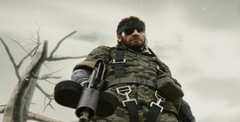 Metal Gear Solid
Metal Gear Solid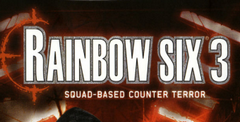 Rainbow Six 3: Squad Based Counter Terror
Rainbow Six 3: Squad Based Counter Terror
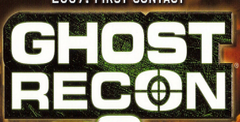 Tom Clancy's Ghost Recon
Tom Clancy's Ghost Recon
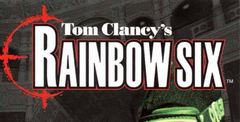 Tom Clancy's Rainbow Six
Tom Clancy's Rainbow Six
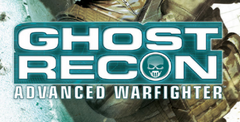 Tom Clancy's Ghost Recon: Advanced Warfighter
Tom Clancy's Ghost Recon: Advanced Warfighter
 Ghost Recon: Island Thunder
Ghost Recon: Island Thunder
 Ghost Recon: Jungle Storm
Ghost Recon: Jungle Storm
 Tom Clancy's Splinter Cell: Chaos Theory
Tom Clancy's Splinter Cell: Chaos Theory
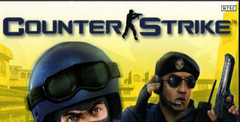 Counter-Strike
Counter-Strike
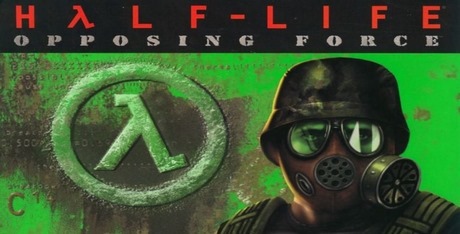 Half Life: Opposing Force
Half Life: Opposing Force
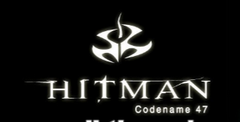 Hitman: Codename 47
Hitman: Codename 47 Heretic
Heretic
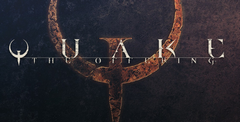 Quake
Quake
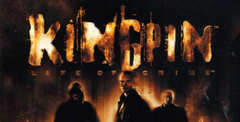 Kingpin: Life of Crime
Kingpin: Life of Crime
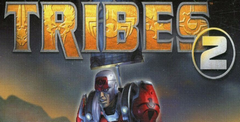 Tribes 2
Tribes 2
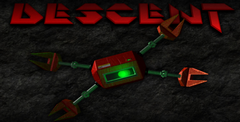 Descent 3
Descent 3 System Shock 2
System Shock 2
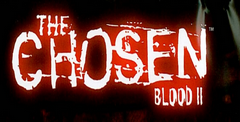 Blood II: The Chosen
Blood II: The Chosen
 Turok 2: Seeds of Evil
Turok 2: Seeds of Evil
 Unreal
Unreal
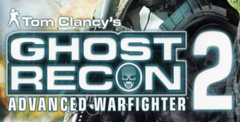 Tom Clancy's Ghost Recon Advanced Warfighter 2
Tom Clancy's Ghost Recon Advanced Warfighter 2
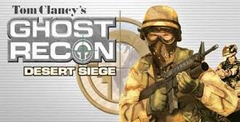 Tom Clancy's Ghost Recon: Desert Siege
Tom Clancy's Ghost Recon: Desert Siege

